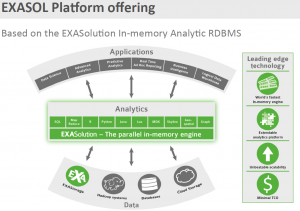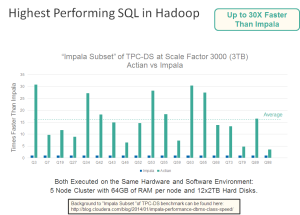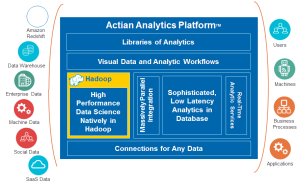First, on a tangent not directly focused on the product: Thank you Chris Neumann, CEO or DataHero. After hearing presenters from multiple companies consistently use the wrong words over the last few months, you used both premise and premises in the appropriate places. Thanks!
As you might gather, Wednesday’s presentation at the BBBT was by DataHero. A fairly young company, less than three years old, DataHero is focused on “Delivering a self-service Cloud BI solution that enables enterprise and SMB users to analyze and visualize their SAAS-based data without IT.”
Self-service BI is what almost all the players, both new and mature companies, are trying to provide these days. This just means they’re another player in attempting to help business knowledge workers to connect to data, analyze it and gather useful and actionable information without heavy intervention by business analysts and IT.
Cloud is also where everyone’s moving since it has so many advantages to all areas of software. DataHero, as a small company, isn’t just in the Cloud. They’ve smartly decided to begin by focusing on public Cloud applications with accessible API’s.
While that initially simplifies things, the necessity to handle complexity still exists in that world. Mike Ferguson, another BBT member analyst, pointed out that many of his clients have multiple, customized Salesforce.com instances and that’s bringing the upgrade issues seen in on-premises systems into the Cloud world. Chris acknowledges that and understands the need to grow to handle the issue, but knows that at the current size of DataHero there’s enough of a market for an initially more focused solution.
A strategic issue comes up with the basic nature of the Cloud. Mr. Neumann mentioned Cloud being opposed to centralized data, but that’s not quite so. Depending on how Cloud systems are set up, they can help or hinder centralization of data. However, right now he is accurate in that most of the growth of Cloud is departmental in nature. It’s also further blurring the always fuzzy line between enterprise and SMB markets by providing applications that both groups can leverage.
Another area that shows thought in their growth strategy is entry into new market. Chris is clear that they dip their toes into an arena, check reactions, and if positive then try to partner with as many companies in the space as possible to maintain neutrality. That means they don’t get locked into the first vendor the first client wants to work with, regardless of market control, leaving flexibility for customers. Their partner page, though young, clearly shows that strategy in effect. That’s a good move and I wish more vendors would think that way.
Another key growth issue is data cleansing. Right now, DataHero does none, expecting that the source system provides that capability. However, as clients use more and more source systems, there’s a cleansing need to clarify data clashes from different systems. That’s something the team at DataHero says they’re aware of while, again, that’s future growth (no time frames, as per legal sanity…).
The demo was very interesting. The other founder, Jeff Zabel, has a strong history in designing interfaces for software in vehicles, meaning usability really matters. That can be seen with a very clear and simple interface. It is easy to use. However, as pointed out by many other companies, 80% of business data has a location component and many DataHero vendors are far ahead of them in the area of geospatial information. That’s a key area they’ll have to improve.
Summary
DataHero is a young company with a young product. The key is that they aren’t just looking at their cool product and customizing solely on first sales. They have thought through a clear growth strategy. The BI tool is clearly fully fledged for the market segment they’ve chosen for initial release and they have thought through their growth strategy in far more detail than I’ve seen in other vendors who have presented at the BBBT.
If they execute their vision, and I see no reason why they wouldn’t, the folks at DataHero have a bright future.



